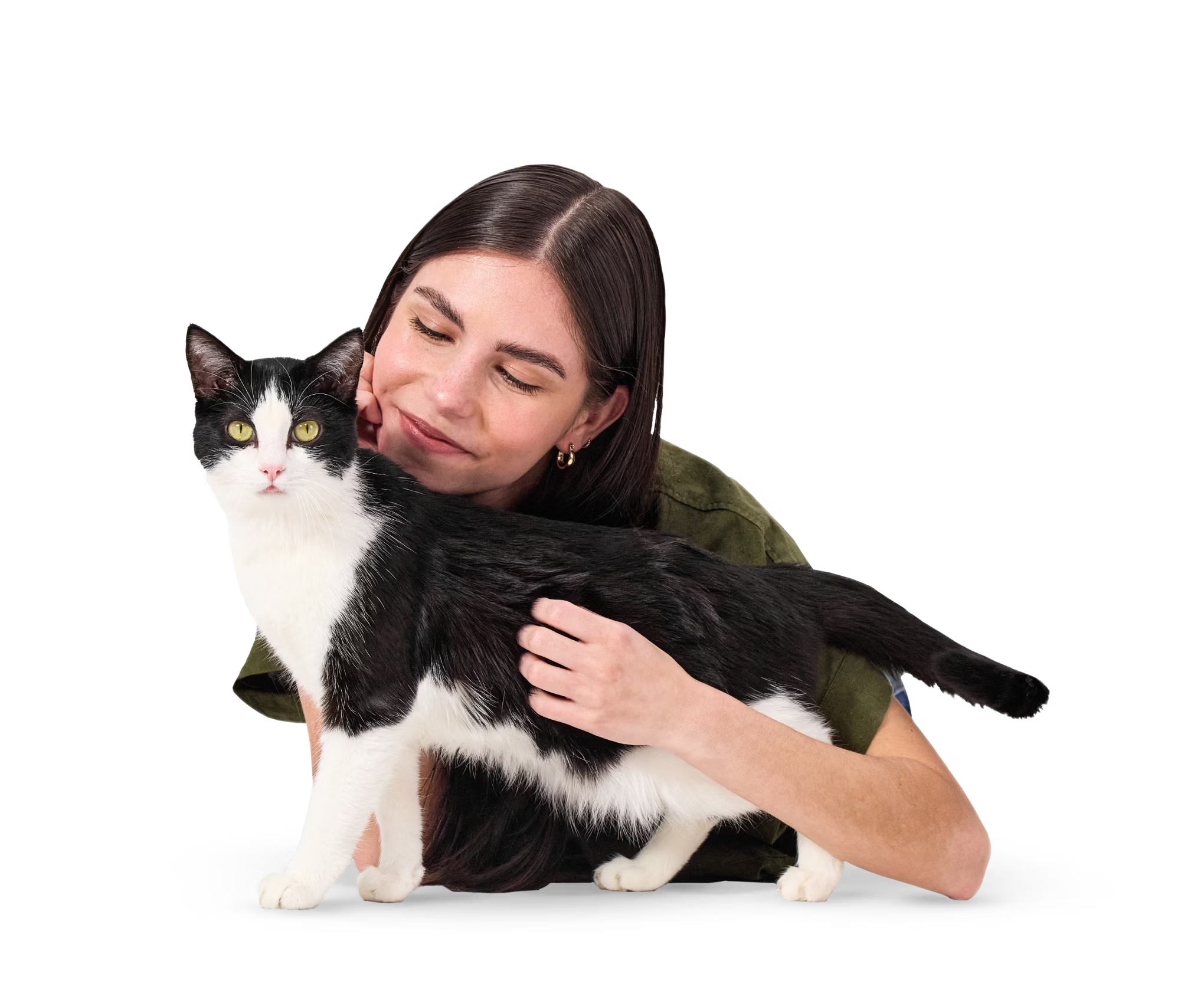Vitamin D-Dependent Rickets
Vitamin D-Dependent Rickets results in skeletal abnormalities caused by low blood calcium levels.
Found in
1 in 1,300 cats
in our testing
Key Signs
Reduced skeletal mineralization, Increased risk of fractures, Generalized pain, Constipation, Seizures
Age of Onset
0 to 2 yrs
Juvenile onset
Inheritance
Autosomal Recessive
For autosomal recessive disorders, cats with two copies of the variant are at risk of developing the condition. Cats with one copy of the variant are considered carriers and are usually not at risk of developing the disorder. However, carriers of some complex variants grouped in this category may be associated with a low risk of developing the disorder. Individuals with one or two copies may pass the disorder-associated variant to their kittens if bred.
Likelihood of the Condition
High likelihood
At risk cats are highly likely to show signs of this disease in their lifetime.
What to Do
Here’s how to care for a cat with VDDR
Partner with your veterinarian to make a plan regarding your cat’s well-being, including any insights provided through genetic testing. If your pet is at risk or is showing signs of this disorder, then the first step is to speak with your veterinarian.
For Veterinarians
Here’s what a vet needs to know about VDDR
Vitamin D-Dependent Rickets is a disorder characterized by abnormal conversion of dietary vitamin D into its biologically active form calcitriol (D3). The lack of the biologically active vitamin D3 causes impaired bone mineralization. Clinical signs of the disease are usually evident before five months of age. The disease causes softening of bones which leads to increased susceptibility to fractures and bone deformities. The disease is characterized by growth retardation. Affected cats usually find the condition painful and are unwilling to move. Affected cats may also have delayed or abnormally developed secondary dentition and may have constipation. In severe hypocalcemia cases, epileptiform seizures may occur. Three causative mutations for the disease have been found in Domestic Shorthair cats. The mode of inheritance for all of these mutations is autosomal recessive.
Management of affected kittens involves lifelong calcitriol supplementation with frequent monitoring of blood calcium levels to avoid overdosing. Dosage will likely need to be adjusted as the kitten approaches adulthood and bone growth slows. Response to treatment can be variable with many cats showing improved but persistent abnormal bone structure.
For Breeders
Planning to breed a cat with this genetic variant?
There are many responsibilities to consider when breeding cats. Regardless of test results it is important that your cat is in good general health and that you are in a position to care for the kittens if new responsible owners are not found. For first time or novice breeders, advice can be found at most cat registry websites.
This disease is autosomal recessive meaning that two copies of the mutation are needed for disease signs to be shown. A carrier cat with one copy of the VDDR mutation can be safely bred with a clear cat with no copies of the VDDR mutation. About half of the kittens will have one copy (carriers) and half will have no copies of the VDDR mutation. Kittens in a litter which is expected to contain carriers should be tested prior to breeding. Carrier to carrier matings are not advised as the resulting litter may contain affected kittens. Please note: It is possible that disease signs similar to the ones caused by the VDDR mutation could develop due to a different genetic or clinical cause.
Technical Details
| Gene | CYP27B1 |
|---|---|
| Variant | G>T |
| Chromosome | B4 |
| Coordinate | 86,180,375 |
All coordinates reference FelCat9.0
We’ve spent the past 20+ years devoted to DNA. Our team of scientists and vets have spent decades developing the most accurate pet DNA test. Because every pet deserves to have their whole story told. We’ve collaborated with leading academic institutions, innovative research labs, and Banfield Pet Hospital™ to make our process exceptionally precise, fast, and affordable.

References & Credit
Credit to our scientific colleagues:
Grahn, R. A., Ellis, M. r., Grahn, J. c., & Lyons, L. A. (2012). A novel CYP27B1 mutation causes a feline vitamin D-dependent rickets type IA. Journal of Feline Medicine and Surgery, 14(8), 587–590. View the article